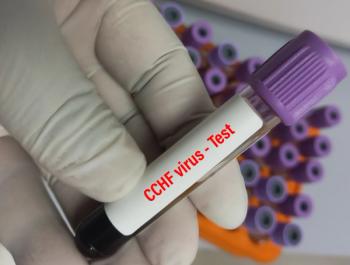
Mild to Moderate Adverse Events Possible in Pediatric Patients With Primary Immunodeficiency Receiving IVIG
Key Takeaways
- IVIG therapy is effective for PID, reducing mortality and severe infections, but can cause mild-to-moderate AEs.
- A study of 69 pediatric patients found 40.6% experienced AEs, with no severe cases reported.
Despite being an effective treatment option, intravenous immunoglobulin (IVIG) can cause transient adverse events in pediatrics with primary immunodeficiency, including headache and fever.
In pediatric patients with primary immunodeficiency (PID) receiving intravenous immunoglobulin (IVIG), mild-to-moderate adverse events (AEs) such as headache, fever, and malaise can be encountered, but the treatment remains a safe and effective option when administered correctly for patients in this population, according to study authors in Archives de Pédiatrie.1
IVIG Is Effective, but Comes With Potential AEs
IVIG has been utilized as a mainstay for PID treatment for decades. Investigators have found that IVIG replacement therapy in patients with PID is effective at reducing mortality, morbidity, and the incidence of severe bacterial infections. Based on positive efficacy and safety data, multiple IVIG products have been approved by the FDA for patients with PID across various age groups, including pediatric patients.2-4
Despite being generally safe, there is a possibility of AEs; most are transient, according to investigators, but severe AEs have been reported in about 2% to 6% of PID cases. Administering IVIG in combination with nonsteroidal anti-inflammatory drugs (NSAIDs) or corticosteroids can help reduce the severity of IVIG-induced AEs, but the possibility of these severe reactions necessitates more accurate elucidation of the characteristics and frequency of AEs in pediatrics with PID who received IVIG therapy.1
AEs With IVIG Are Mild, Transient in Pediatrics
The retrospective, cross-sectional trial enrolled 69 patients aged 0 to 18 years from January 2012 to December 2021. During this period, a total of 2025 IVIG infusions were administered. In all cases, premedication with NSAIDs or corticosteroids was administered prior to infusion of IVIG. AEs were classified as immediate (ie, those occurring during the infusion), delayed (ie, those occurring after the infusion), and late (ie, those occurring 1 week after the infusion). Furthermore, they were categorized as being either mild, moderate, or severe.1
In total, 181 AEs were detected across all infusions included in the study. Notably, there was at least 1 AE seen in 28 of the 69 patients (40.6%). Patients with the highest rates of AEs per infusion included those with combined immunodeficiencies with associated or syndromic features and those with an immunodeficiency affecting cellular and humoral immunity, with rates of 12.6% and 12.4%, respectively, according to the investigators. Those with the highest rate of AEs per patient were patients in the combined immunodeficiencies group, at 63.1%, the researchers found.1
Importantly, all AEs observed throughout the study were mild to moderate, with no severe AEs such as kidney damage or thrombosis detected. Upon evaluation of all infusions, the most observed AEs were headache (n = 50, 2.5%), fever (n = 37, 1.8%), and malaise (n = 19, 0.9%). In observing AEs per patient, headache (n = 17, 24.6%) and fatigue (n = 8, 11.6%) were the most common, the investigators found. Critically, none of the patients enrolled in the trial experienced an AE that would interrupt IVIG replacement therapy. There were no late-onset AEs observed, while immediate-onset AEs were seen in 3.5% of infusions and delayed-onset AEs in 5.4%, according to the authors.1
Future Research Directions
Future research should examine differences in AE incidence between demographic groups, including gender, according to the study authors. In this trial, the investigators found a higher incidence of AEs in females compared with males. They discussed that this observation, which differs from those of previous literature, could be attributed to variety in disease profiles. The authors called for prospective studies that feature only PID diagnoses to better evaluate this point of contention.1
“AEs encountered in patients with PID receiving immunoglobulin replacement therapy (IgRT) are mild to moderate. For delayed AEs, families should be contacted, and patients should be monitored after the infusion,” study authors concluded. “Delayed and late-onset AEs should be questioned before the next IgRT infusion.”1
REFERENCES
1. Özer M, Tekeli S, Doğan S, et al. Adverse events associated with intravenous immunoglobulin infusions in pediatric patients with primary immunodeficiency: A 10-year single-center study. Archives de Pédiatrie. 2025;32(4):231-237. doi:10.1016/j.arcped.2025.01.008
2. Nain E, Kiykim A, Kasap NA, et al. Immediate adverse reactions to intravenous immunoglobulin in primary immune deficiencies: a single center experience. Turk J Pediatr. 2020;62(3):379-386. doi:10.24953/turkjped.2020.03.004
3. Gallagher A. FDA approves IVIG for pediatric patients aged 2 and older with primary humoral immunodeficiency. Pharmacy Times. Published December 13, 2023. Accessed May 13, 2025. https://www.pharmacytimes.com/view/fda-approves-ivig-for-pediatric-patients-aged-2-and-older-with-primary-humoral-immunodeficiency
4. McGovern G. FDA approves the intravenous immunoglobulin G Yimmugo to treat primary immunodeficiencies. Pharmacy Times. Published June 17, 2024. Accessed May 13, 2025. https://www.pharmacytimes.com/view/fda-approves-the-intravenous-immunoglobulin-g-yimmugo-to-treat-primary-immunodeficiencies
Newsletter
Stay informed on drug updates, treatment guidelines, and pharmacy practice trends—subscribe to Pharmacy Times for weekly clinical insights.


















































































































































































































